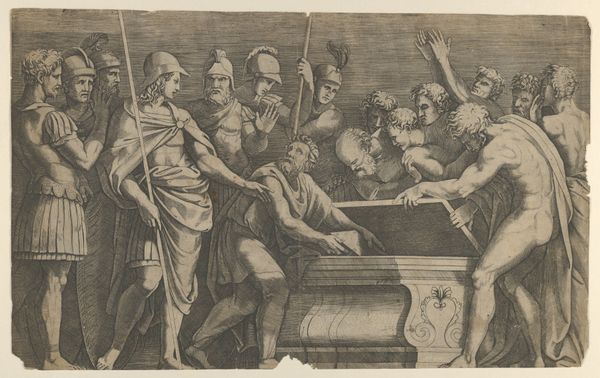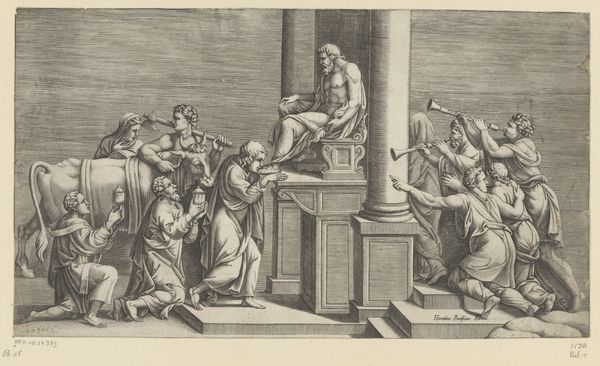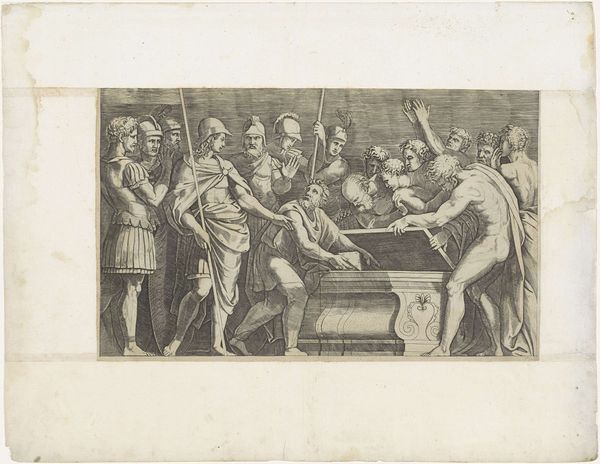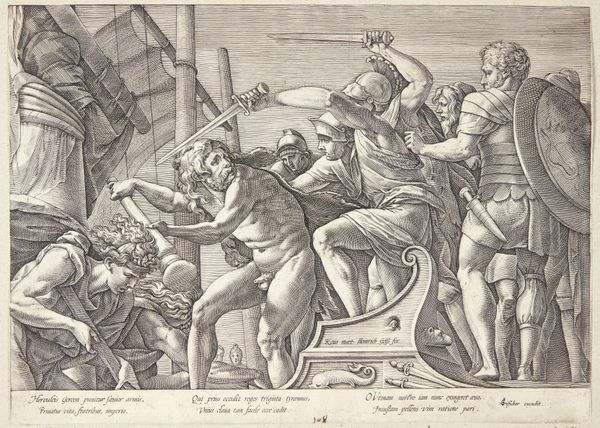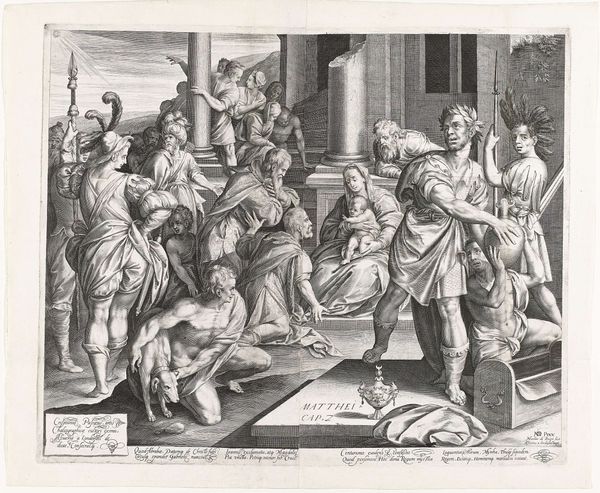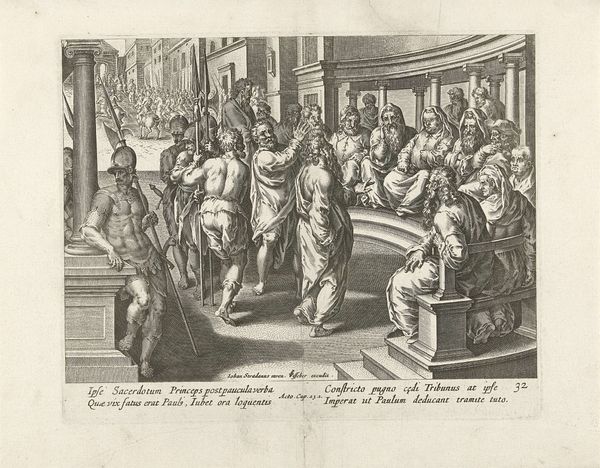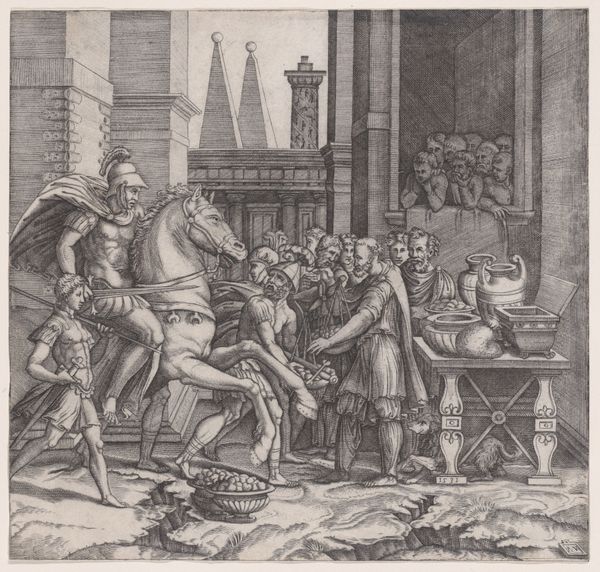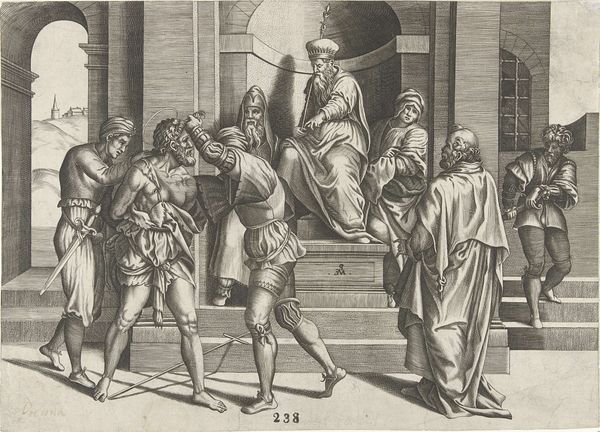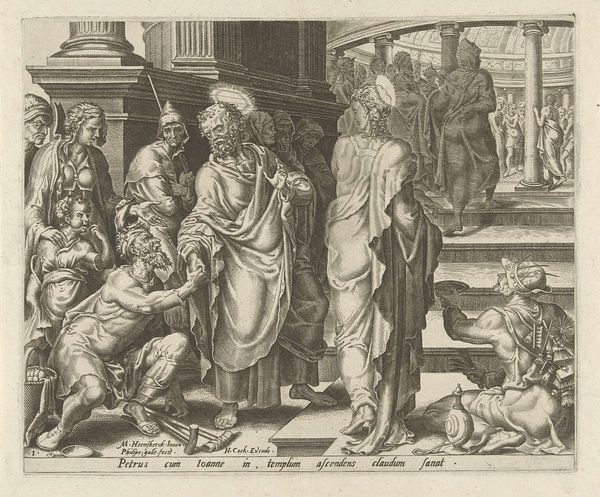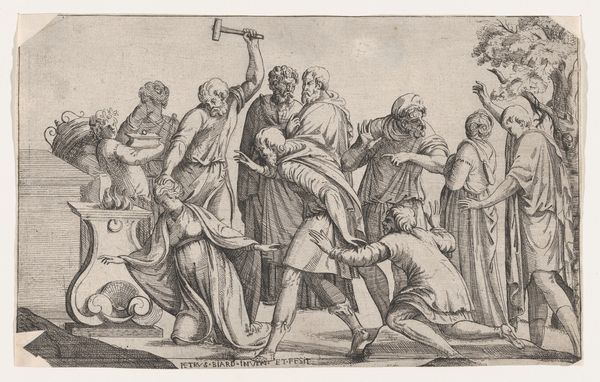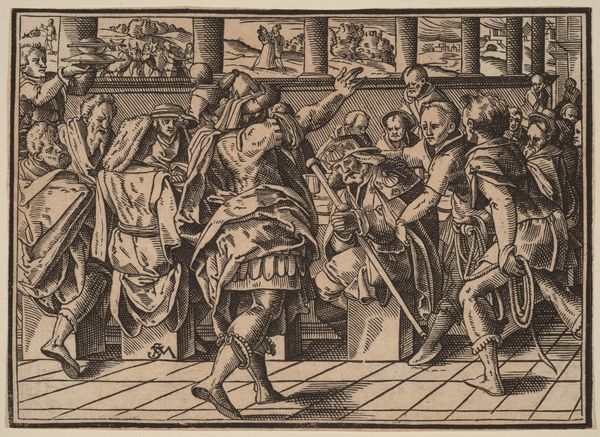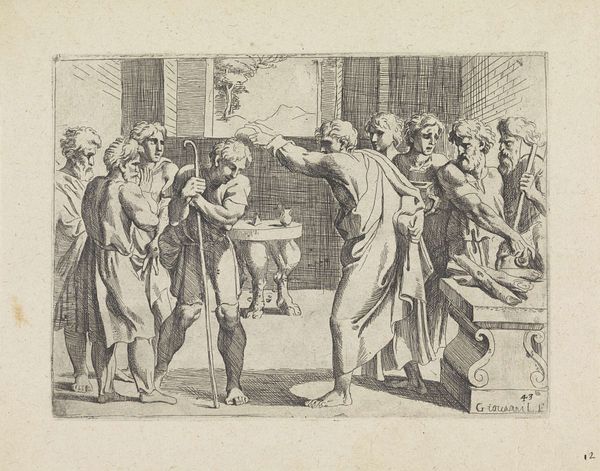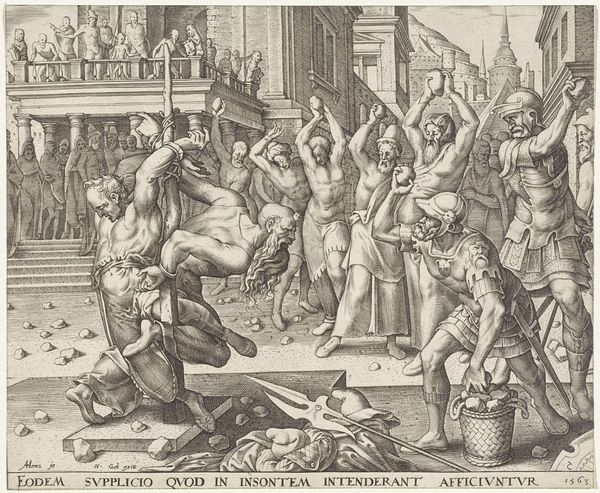
Alexander de Grote laat de werken van Homerus veilig opbergen 1515 - 1575
0:00
0:00
print, engraving
#
portrait
# print
#
pen illustration
#
greek-and-roman-art
#
caricature
#
classical-realism
#
figuration
#
11_renaissance
#
pen-ink sketch
#
sketchbook drawing
#
history-painting
#
engraving
Dimensions: height 254 mm, width 395 mm
Copyright: Rijks Museum: Open Domain
This engraving, made by an anonymous artist, depicts Alexander the Great ensuring the safe storage of Homer's works. Images like this gained traction in the 17th century, a time when the concept of the "museum" was being actively conceptualized. It reflects not just a reverence for classical knowledge but also a commentary on the emerging role of institutions in preserving and controlling cultural heritage. The scene is rich with symbolism. Alexander, the powerful conqueror, is shown not just as a military leader but as a patron of the arts, thus underlining the idea that true power lies in the protection and promotion of culture. The act of safeguarding Homer’s works can be seen as a political statement, suggesting that even the greatest empires are built on the foundations of art and literature. To fully appreciate the social dimensions of this work, we need to consider the history of collecting and display, and the politics of cultural preservation. This requires a dive into archival materials and institutional histories, which in turn highlights the crucial role of the historian in interpreting art.
Comments
No comments
Be the first to comment and join the conversation on the ultimate creative platform.
